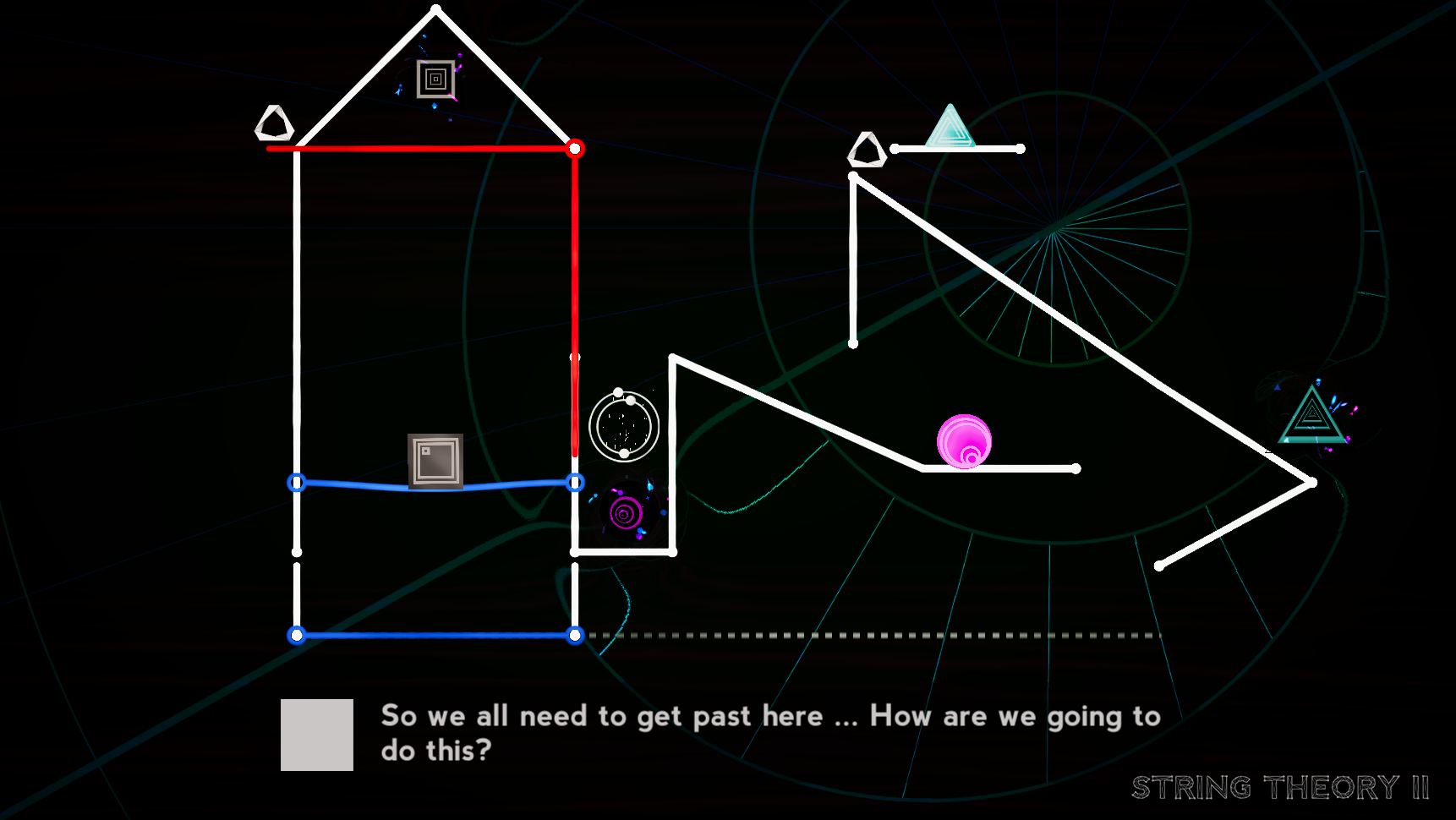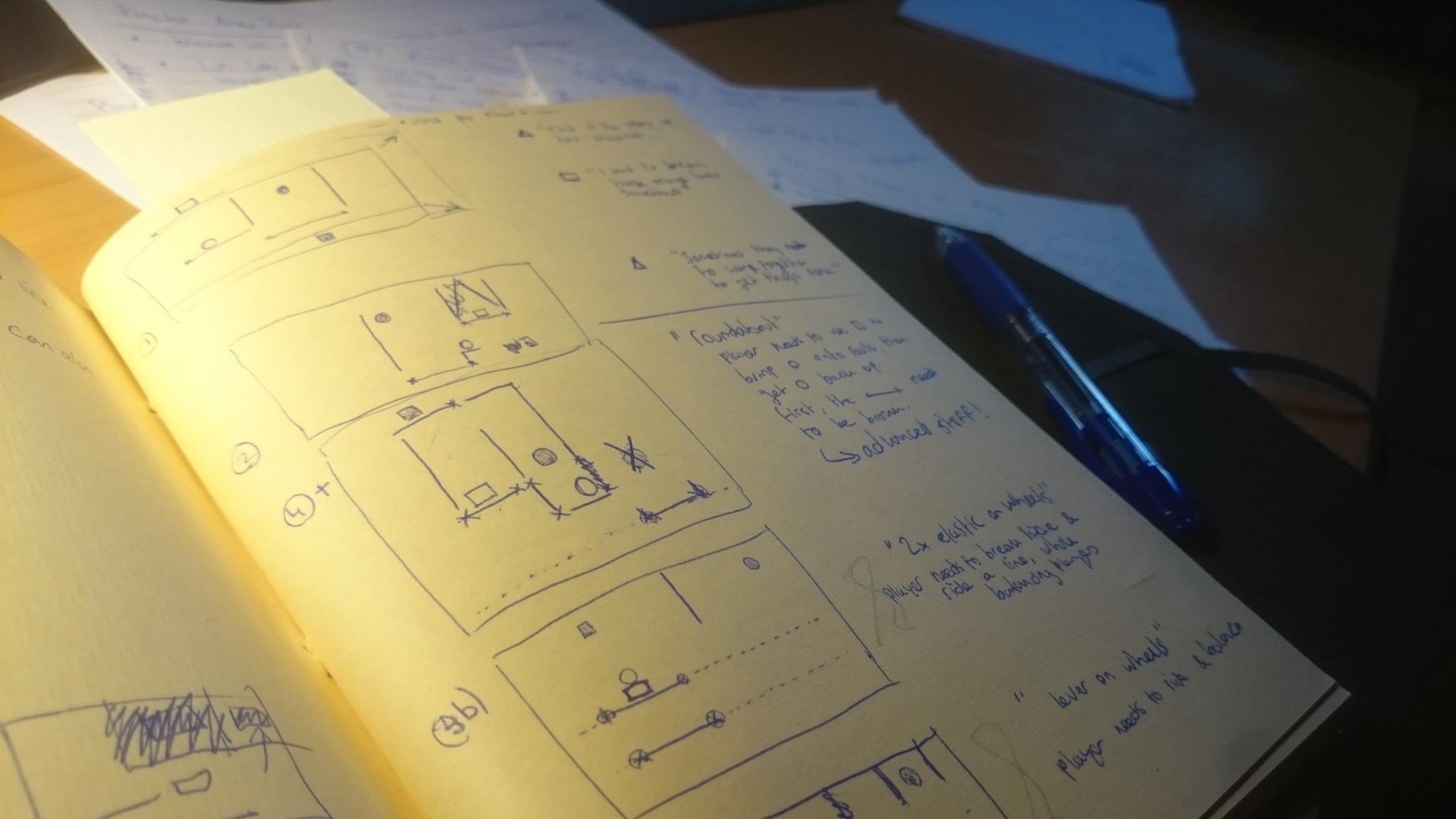“Designing interesing challenges that fit in an abstract universe”


From sandbox to puzzle
When coming up with new mechanics for the second String Theory title, I knew I needed something to let players move back-and-forth over the screen more than they did in the original. This is where the strings-on-rails and line-chaning-color triggers came from. Using these mechanics, I had a reason to let players do multiple things on one screen. A lot of other mechanics were designed (some based on fan feedback of the original), but the mechanics mentioned above were the basics to turn a physics sandbox game more into a more puzzle-oriented title, which was how I wanted the second String Theory game to be. I drew all puzzle ideas in a sketchbook first, to get an idea if they would work in the engine.

Playtesting and iterating
I tried to come up with challenges that the player couldn’t simply brute force their way through, which is proven quite a challenge because of the physics oriented gameplay. The original game (see video) was praised by having multiple solutions to a challenges, so I tried to keep that in mind when designing the harder puzzles for the second game. When we got into production, a lot of playtesting and iteration was involved to see if all outcomes would work out. In the end, I think I hit the sweet spot for the difficulty curve when it comes to a free web-based game, but for a future expansion of the series, I’d love to dive even deeper into the challenges of the 2nd dimension.

